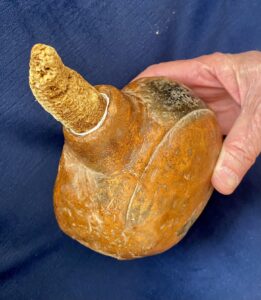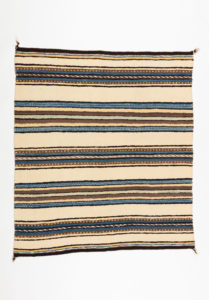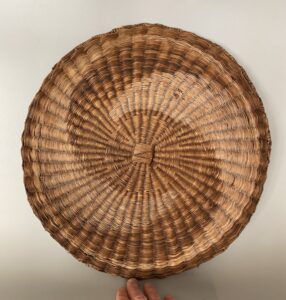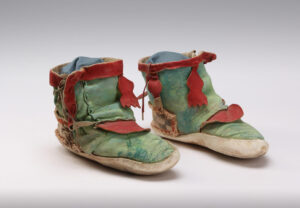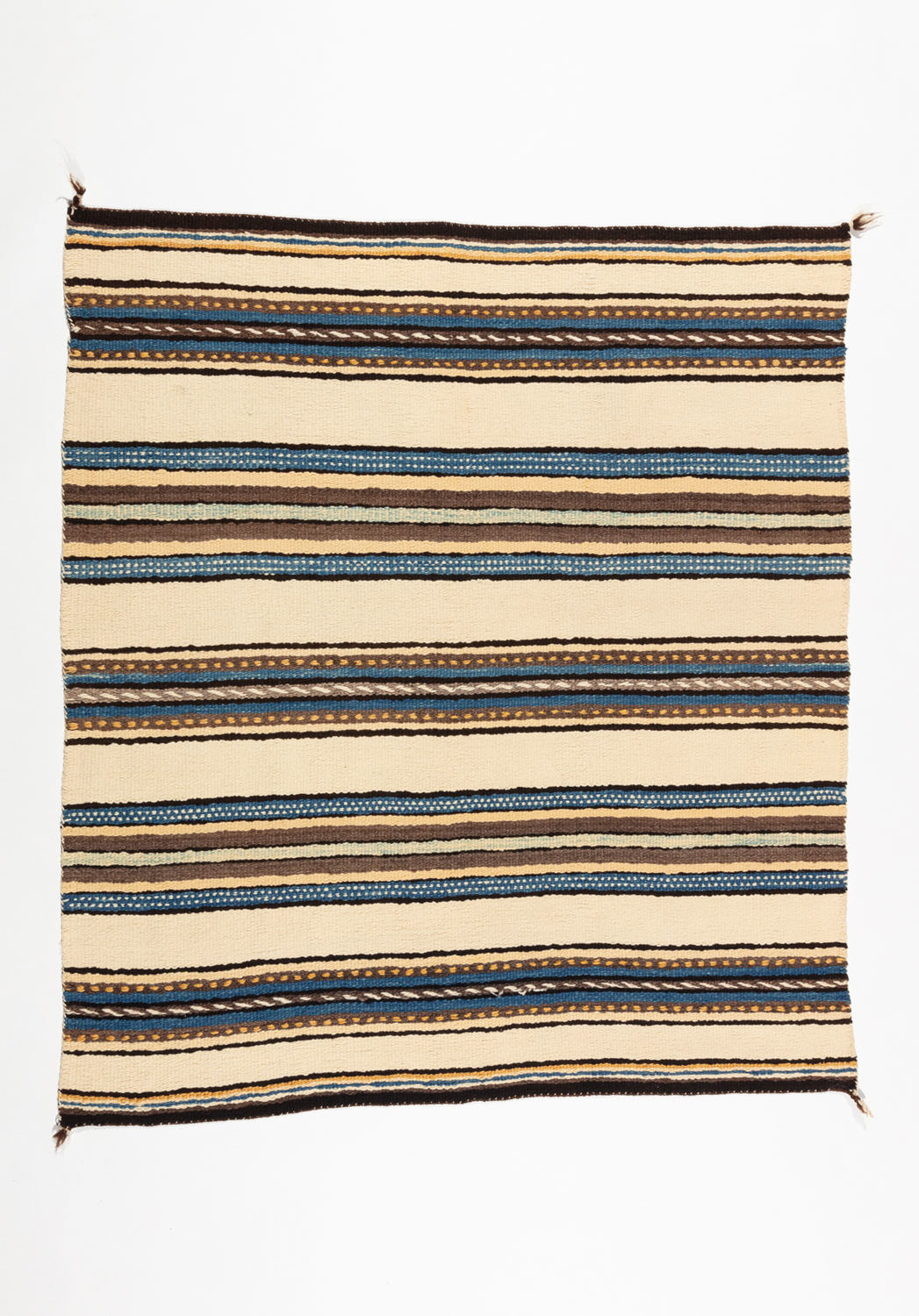
Collecting Hopi Material Culture
- by Jamie Compton
- in A closer look...
- posted November 10, 2023
Who Are The Hopi?
The Hopi people are centered on a reservation in Arizona that measures about 2,532 square miles. The 2010 sense has the population at 19,338. They live in the Southwest where they have been for eons. The word “Hopi” is defined as “behaving one, one who is mannered, civilized, peaceable, polite, who adheres to the Hopi way”. The Southwest is also home to the Navajo and 19 other recognized Pueblos. While Hopi is the most western pueblo resulting from the ancestral group (Hopi:Hisatsinom) that lived in the Southwest prehistorically, they are typically not referred to as a Pueblo, but as Hopi. There are many reasons for this, but to me Hopi is a group that has remained more contained than the other Pueblos. Their identity is stronger. The current world of Hopi is made up of 12 villages on three mesas. The Hopi language belongs to the Ute-Aztecan language family and there are four dialects: First Mesa, Mishongovi, Shipaulovi and Third Mesa.
Hopi Material Culture
The Hopi remain highly active in keeping their culture not just alive but thriving. The made objects that support their life work in unison with their beliefs. Weavings, baskets, pottery, utensils, fetishes are all examples of objects made by the Hopi. The term “material culture” is used to define those objects made by the Hopi to live a successful life. While the life of the Hopi was altered forever by outside influences, first the Spaniards soon followed by the Euro-Americans, they have remained strong in their culture and the ways that make their society flourish. Along with their adaptions to the modern world, they have learned to make items for the outside world as a way to adapt and to encourage their own ways of being.
New collectors are often drawn to collecting Hopi made objects not just for their beauty, but also for the spirit and awe that these objects bring. While Euro-Americans have long left their own tribal existence, the very fact that they, too, once had a tribal affiliation allows them the transference of ideals in a highly romantic way from the Hopi to the object. The tourist will likely never use the item as it was originally intended for, but they can imagine the world that these items belong to, and in doing so, keep strong a place for the Hopi.
Hopi Pottery
There are a large number of items made by the Hopi both for their personal use as well as for sale to outside persons. Most common would be pottery. These vessels, from ancient to modern, from tiny to huge, all follow a similar script identifiable as Hopi. The matriarch Nampeyo of Hano is the most famous Hopi potter and can bring values well above $20,000. Her name continues with her offspring, many times over, so one can purchase a modern piece of pottery with the name Nampeyo at a very reasonable cost.
Here is a sampling of Hopi pottery available at my gallery (clicking on the photo takes you to the listing on my website under “Collection”).
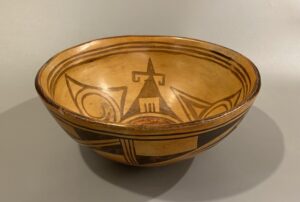
An early Hopi bowl circa 1910 with Zuni designs. This could be a cross-cultural bowl showing the influence of both cultures.
Hopi Weaving
Second to pottery would be the weavings of Hopi. Hopi weavers, historically male in contrast to the Navajo which are female, became the most highly skilled weavers of all the Pueblos. It was common in the 19th century and early 20th century for the Hopi to weave mantas (woman’s shawls) to be sold to other pueblo groups. While other pueblos wove for themselves, the Hopi were prolific enough that it became their trade. However, the Hopi were never as industrious with their weaving as were the Navajo. Outside of weaving for themselves and other pueblos, the Hopi did not but rarely profit by weaving for the tourist trade coming to visit the West. For this reason, Hopi weaving is more rare than Navajo weaving since there are not as many made. Hopi weaving continues to thrive, with such weavers as Ahkima Honyumptewa creating exceptional weavings.
Here is a sampling of weavings available at our gallery (clicking on the photo takes you to the listing on my website under “Collection”):

This is a rare and early (circa 1860) Hopi baby’s blanket made by a male family member, such as an uncle, for the new born boy.
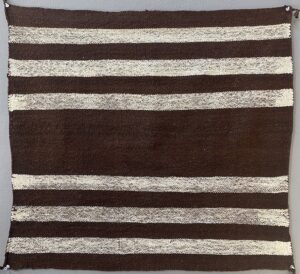
A rare Hopi child’s blanket, I’m told meant for a girl (I have yet to confirm this). Wonderful how this weaving has such a similar layout to the classic Navajo first phase blankets.
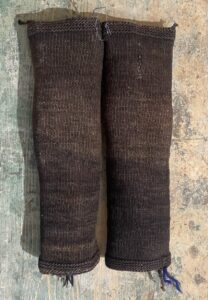
A pair of Hopi woman’s leggings for everyday wear circa 1910 – all natural, hand spun brown sheep’s wool.
Hopi Basketry
Hopi basketry includes both the historical pieces they made for themselves and, to a lesser extant, baskets made for the tourist trade. Baskets were often used as holders of minerals, corn, and other sacred objects for ritual events. They were also used for everyday living, such as holding fruit or other food groups. Baskets are relatively easy to make (compared to weaving) and so are more prevalent as a tourist object especially after WW II.
Here is a sample of Hopi basketry (clicking on the photo takes you to the listing on my website under “Collection”):
Hopi Moccasins
Hopi moccasins come in many varieties. Most all of them have a heavy and thick hide base. The uppers can be thin as in wrapping around a deer hide going up the leg – these are tall moccasins. The pair shown below are meant for dancing, and thus have a lot more color and frills added to them.
Here are some examples of moccasins available at the gallery (clicking on the photo takes you to the listing on my website under “Collection”)
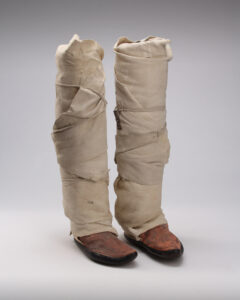
This pair of woman’s high top moccasins are not from Hopi, but from the San Felipe Pueblo. The Hopi high tops would be very similar to these.
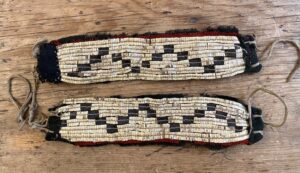
These anklets are from Zuni, not Hopi, but they are very similar to what Hopi would make for the backs of their dance moccasins. This pair is very early, likely mid 19th century.
There are many other Hopi related, meaning Pueblo, items available at my gallery. I have a wide selection of objects for beginning collectors as well as advanced. I encourage you to look through the Collection page on the website or to come into the gallery.


